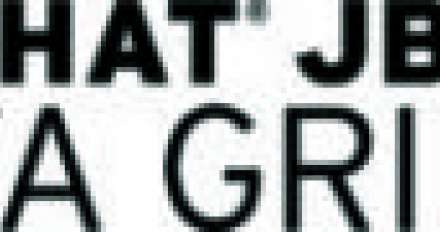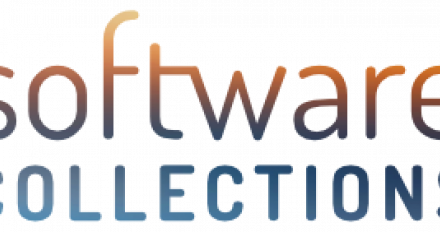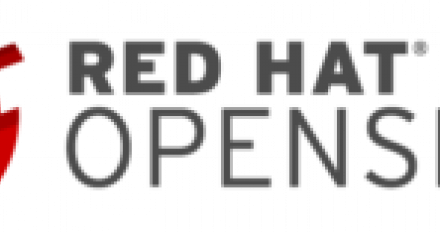
OpenShift Commons Briefing: Networking and OpenShift V3 with Clayton Coleman
OpenShift Commons Briefing: Networking and OpenShift V3 with Clayton Coleman

OpenShift Commons Briefing: Networking and OpenShift V3 with Clayton Coleman

Coming off the heels of a 2-day session on Solum at Rackspace's SF offices, where parties interested in Solum, the OpenStack-related initiative for application lifecycle management that leverages both Heat & Docker - Red Hat OpenShift Team members who attended (Clayton Coleman, Chris Alfonso & Krishna Raman) bring us up to speed on the project & Red Hat's involvement.

(Part 1)Containers are enabling developers to package their applications in new ways that are portable and work consistently everywhere: on your machine, in production, in your data center, and in the cloud. And Docker has become the de facto standard for those portable containers in the cloud. This lab offers developers an intro-level hands-on session with Docker, from installation to exploring Docker Hub, to crafting their own images, to adding Java apps and running custom containers. This is a BYOL (bring your own laptop) session, so bring your Windows, OS X, or Linux laptop and be ready to dig into a tool that promises to be at the forefront of our industry for some time to come.

Containers are enabling developers to package their applications in new ways that are portable and work consistently everywhere: on your machine, in production, in your data center, and in the cloud. And Docker has become the de facto standard for those portable containers in the cloud. This lab offers developers an intro-level hands-on session with Docker, from installation to exploring Docker Hub, to crafting their own images, to adding Java apps and running custom containers. This is a BYOL (bring your own laptop) session, so bring your Windows, OS X, or Linux laptop and be ready to dig into a tool that promises to be at the forefront of our industry for some time to come.

Our Microservices Playground: 6 different microservices, each using a unique Java framework: Dropwizard, Spring Boot, WildFly Swarm, JBoss Enterprise Application Platform, Node.js, Vert.x.
Leveraging Docker+Kubernetes+OpenShift running in a Red Hat Enterprise Linux (RHEL) VM. Microservices Slide Presentation http://bit.ly/helloworldmsa Demo Source Organization https://github.com/redhat-helloworld-msa Download the RHEL VM for Docker+Kubernetes+OpenShift (CDK) http://developers.redhat.com/products/cdk/docs-and-apis/

For the 2015 demonstration, we really wished to stretch ourselves by creating multiple applications that the audience was to touch. To illustrate IoT (Internet of Things), we specifically fielded several hundred bluetooth beacons and several Raspberry Pi-based sensors/scanners to demonstrate how to track movement inside of a physical space (where GPS is not appropriate). We combined this technology with a mobile application (based on the announced Red Hat Mobile Application Platform) so the moving objects (people) could see their current status, their arrivals/departures from a particular room. Also, via this same mobile application, we invited the audience to submit a finger drawn sketch to claim one of 1000+ containers we launched live on stage via Openshift (based on Docker & Kubernetes)

With microservices, polyglot, and DevOps on the rise, what's happening with testing? Do they increase complexity and make our testing efforts harder? Or do they actually make it easier to write better tests? In this session, we will explore how we can do our testing in this new world, and how the new world can help us test better. Other topics we'll discuss include: NodeJS, DynJS, VertX, Ceylon, or Ruby-orchestrated microservices. System scale testing with different configurations. Database migration and regression testing.

DevOps is changing at a fast pace as containers are rapidly going mainstream. In this panel, leading startup companies and Red Hat's platform group will discuss their insights and predictions for the how DevOps will change going forward. Our industry experts will discuss: DevOps Docker technology Source-to-image STI CI/CD Immutable infrastructure Panel members Krish Subramanian (moderator), OpenShift director of strategy, Red Hat Avi Cavale, CEO Shippable.com Steven Sheinfield, Sr. business development manager, NewRelic Andrew Phillips, VP of product management, XebiaLabs Langdon White, Developer evangelist, Red Hat Ryan King (introduction), Red Hat Innovate

Come see how a practical, out-of-box-reusable deployment of a continuous delivery tool delivers complex integration deployments using tools like Docker, Jenkins, OpenShift Enterprise by Red Hat, and Red Hat JBoss Fuse. As we’ve worked with clients to complete complex integrations with JBoss Fuse, we’ve learned best practices doing continuous delivery. We’ve taken what we’ve learned and created a working, modular example hosted on github. In this session, we'll use this example to discuss continuous delivery, DevOps, and how Red Hat’s technology brings a practical approach to making the theory a reality.

Kubernetes has answers to many questions related to clustering and the required low-level networking. When using Kubernetes for real live deployments we need more than those lower-level solutions however. We need things like automated deployments, load balancing for web applications, blue/green deployments and monitoring. This is all possible with Kubernetes when we start to look at Kubernetes as an API. In this talk you will learn to embrace the Kuberentes API and some of the patterns, tools and mechanisms we developed and use around Kubernetes to prepare for production grade deployments.

Docker is not just for deployment. As a developer, there are many ways Docker can make you more productive, regardless of how your app gets deployed. In this session, you'll learn practical strategies for using Docker, including how to: Run unit tests locally in multiple environments with almost no overhead. Make your integration tests easy for anyone to run by distributing them in a Docker image. Simulate advanced network topologies, especially for a service-oriented architecture. Make a Docker image in 5 minutes or less that produces builds from a consistent environment. Isolate database state changes in your test suite by using a pool of disposable containers.













